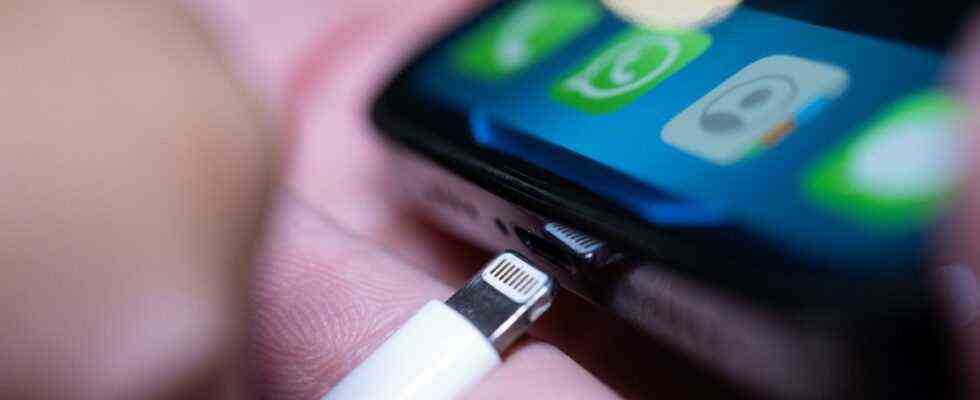One charging cable for the mobile phone, one for the tablet and one for the headphones – there is currently no uniform and therefore simple solution in Germany and the EU. In particular, the iPhone company Apple with its in-house Lightning connector has made this difficult so far. This should soon be over – at least if the EU Commission has its way. The Brussels authority wants to present a legislative proposal for uniform charging sockets on electrical devices this Thursday. An overview:
Why hasn’t there been a uniform solution for a long time?
The various charging cables and sockets have long been a nuisance for consumers – even if the situation has already improved considerably. More than ten years ago, 14 cell phone manufacturers – including Apple – agreed to a uniform standard for power supplies under pressure from the EU Commission. When it comes to sockets in smartphones and tablet computers, there were still three of the dozen types that were once left: the now outdated Micro-USB, the newer USB-C and the thinner Lightning connectors from Apple. The group refuses to completely renounce its standard. The competition from Samsung to Xiaomi to Oppo, One-Plus and Motorola now usually use USB-C sockets on their devices.
How does the EU Commission want to proceed?
If the EU Commission has its way, USB-C should become the general standard for the sockets in the devices, as the authorities said in advance. In addition, customers should no longer be obliged to buy a power supply unit if, for example, they buy a new cell phone. Among other things, this is what the EU Commission intends to propose in a draft directive, which the EU states and the European Parliament will then have to negotiate. With this demand, however, the Commission is lagging behind the market trend because Apple, Samsung and other manufacturers are now delivering their smartphones without a power supply unit.
For which devices should the whole thing apply?
The specifications should apply to six device categories, as it was said. In addition to cell phones, these include tablets, headphones, speakers, portable consoles and cameras.
Why is this advance coming?
On the one hand, standardized charging sockets make it much easier for consumers because they need fewer different cables. On the other hand, it should also avoid huge amounts of electronic waste. The municipal waste management welcomed the move: “Cable clutter is neither consumer-friendly nor beneficial to the environment,” said a spokesman for the Association of Municipal Companies of the German Press Agency. “Uniform charging cables help to avoid unnecessary waste.”
Why is Apple reluctant to standardize?
Apple wants to keep its Lightning connector, which is currently installed in all iPhones, but also in some tablet models such as the current iPad 9 or the AirPod headphones. In the beginning, the main thing was that with Lightning extremely flat devices could be built to be dust- and waterproof, which would not have been possible with micro-USB. In the meantime, however, there is a viable alternative with USB-C, which is also used by Apple in some cases. The more expensive iPad models already have a USB-C socket. Apple has also abandoned the proprietary MagSafe connection in favor of USB-C for laptops (MacBooks). When it comes to power supplies – which can be separated from the charging cables – USB-C is used anyway, argues Apple. With a compulsory abolition of the Lightning socket, a huge amount of electronic waste will be created.
Does Apple also have economic reasons to hold onto the Lightning cable?
Yes. The group generates income with its “Made for iPhone / iPad” (MFI) program. Third-party manufacturers of Lightning cables must have their products certified in the MFI program. How are things going now? First of all, the EU states and the European Parliament will be discussed on the proposal presented by the EU Commission. Then both sides have to find a common line. Parliament in particular is likely to put pressure on it, as it has been pushing for uniform charging cables for years. After an agreement between the European Parliament and EU countries, the national governments would have one year to implement the new rules in national law. The Commission proposal should also provide for a two-year transition period for companies, as the authority said. The uniform charging socket would not be mandatory for companies until 2024 at the earliest – and the cable clutter in households would decrease. Until then, charging cables may only play a subordinate role because devices will be charged wirelessly more and more frequently in the future.

